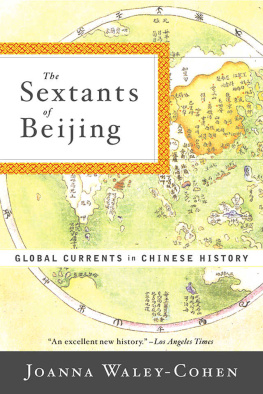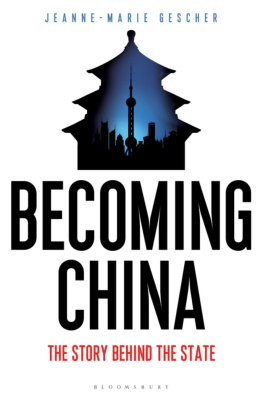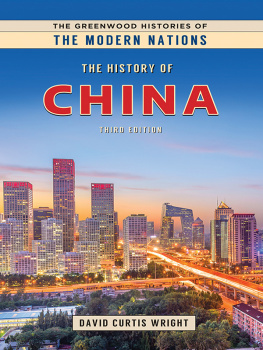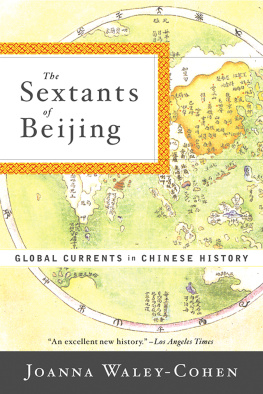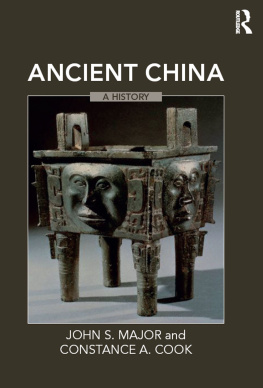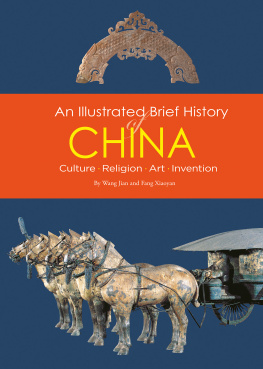
Contents

CHINA AND CATHOLICISM IN THE SIXTEENTH
THROUGH EIGHTEENTH CENTURIES
FOREIGN GOODS AND FOREIGN KNOWLEDGE
IN THE EIGHTEENTH CENTURY
MAPS





In the first decade of the nineteenth century a confederation of pirates plagued the waters off Chinas southeastern coast. At their height they numbered at least fifty thousand men and women, with some two thousand junks, organized into two fleets, based in the port of Jiangping (Giang Binh) on the Vietnamese border. Their daring was legendary. In 1805, for instance, they blockaded the Portuguese island enclave of Macao for several weeks, reducing the panicked occupants to a few days food supply. Three years later they held hostage three large Siamese junks on a tribute mission and drove five American ships to take refuge within range of Macaos artillery defenses. They capped it all by capturing the brig of the visiting Portuguese colonial governor of Timor, and to add insult to injury, the pirates towed the vessel ignominiously past Macao city, trailing its flag in the water.
Solving the piracy problem was in the interest of both the Manchu Qing rulers of China (16441911) and the various foreign traders whose merchantmen were vulnerable to pirate attack. The Qing insisted that it was their prerogative alone to patrol the Chinese coast, but they were unable to clear the seaways. So, in line with numerous predecessors, who over the centuries had called on foreign fighting forces and military technology, the Qing enlisted the aid of armed Portuguese and British ships in the area. But their occasional joint expeditions were not terribly successful and led to mutual recriminations. The Europeans accused the Chinese of being in league with the pirates, while the Chinese blamed the Europeans because their deep-draft boats could not sail in shallow coastal waters, thus usually allowing the pirates to slip away.
The pirates themselvesfishermen, peddlers, grass cutters, shopkeepers, rice dealers, sailors, and others from the lowest echelons of Chinese societywere just as willing to make use of the foreigners and their skills as were the Qing authorities. After pirate leader Zhang Baos vessel fled from a broadside of twenty-four-pound shot administered by a British ship, for instance, he is said to have examined the size of the cannonball with astonished respect. Only a few months later, his ship boasted its own twenty-four-pounder. And pirates often spared the lives of foreigners they captured so as to co-opt their expertise in gunnery, medicine, or just literacy.
Two significant points emerge from these facts. First, it is obvious that at the dawn of the nineteenth century Chinas involvement with the wider world was already routine. Second, and as a corollary, clearly few Chinese, whether government officials or common folk, cared whether the skills and technology they needed had a foreign origin. In other words, the traditional isolationism, hostility to innovation, and xenophobic sentiment often sweepingly attributed to all Chinese, seem to have played little part in their calculations.
Unfortunately, however, even by the early 1800s this kind of misdiagnosis was fast becoming a habit among a majority of the Europeans arriving on Chinas shores. Whatever these observers may have seen with their own eyes, their opinions of China and Chinese civilization were affected rather more by their own prejudices. These prejudices themselves were primarily influenced by the context in which they formed: by the Enlightenment, by industrialization, and by the new passion for political liberty evidenced by the American and French revolutions, among other things. Their judgments still profoundly influence our understanding of China today.
China shares responsibility for the formation of these notions. For one thing, there has been a wide chasm between propaganda and reality. Lofty public utterances emanating from the Chinese side led many observers to draw the conclusion that China regarded its own civilization as vastly superior to all other contenders. But the reality is that this rhetoric disguised considerable flexibility and open-mindedness. When we examine Chinese acts rather than Chinese words, it becomes evident that since earliest times China has displayed no greater cultural chauvinism than most other societies.
Old habits die hard. Much of what we once thought we knew about China now seems little more than a set of stereotypes, yet the promotion of this knowledge to the level of certainty has been extremely influential. Thus apparently well-informed people commonly, but inaccurately, still refer to the diverse and dynamic vastness of China as monolithic and perennially isolated from the rest of the world. These misconceptions, largely reflections of the views of the colonial Western powers, have even become a part of Chinese self-perception, for the extraordinary success of the West in undermining the Chinese sense of national identity and self-confidence led many Chinese to accept as accurate Western descriptions of China, particularly its relations with the rest of the world.
This book springs from the conviction that we must lay to rest some long-cherished myths, including the assumption that the Western nations opened up a hitherto closed China. Above all, it argues that time out of mind, ChinaChinese emperors, Chinese governments, and Chinese people across the social spectrumhas been energetically and enthusiastically engaged with the outside world, permitting, encouraging, and seeking the circulation of foreign goods and ideas. At the same time, however, those in authority have been consistently reluctant to allow free rein to any kind of foreign ideology, for fear of losing political and moral control over that portion of the population for whom the foreign ideology might come to prevail over Chinese values and traditions.
The book is thus primarily about how China has taken the measure of the world and about the goods and ideas that have flowed into and out of China during the past several centuries. Readers should not, however, be misled into thinking that the books focus on foreign influences is intended to suggest that all of Chinas development, especially in the modern era, has been externally driven. To the contrary, the contention of this book is that much of Chinas historical experience has involved the complicated interplay of, on the one hand, indigenous developments and, on the other, foreign imports and influences of all kinds.
The book opens with a broad overview of Chinas early contacts with other civilizations, from around 200 B.C., when surviving records enable us to begin to reconstruct the countless connections that existed, down to the advent of Europeans to East Asia in the sixteenth century. The principal theme of Chapter One is Chinas active participation in a complex network of international exchange that stretched from Syria in the west to Japan in the east and from Korea in the north to Indonesia in the south and, by the sixteenth century, included Europe and the New World. Among the most influential features of this traffic was the spread of Buddhism from India to China; from China it spread across East Asia, particularly to Korea, Japan, and Vietnam, taking with it elements of Confucianism and other cultural, intellectual, political, commercial, and artistic aspects of Chinese civilization.
Next page
